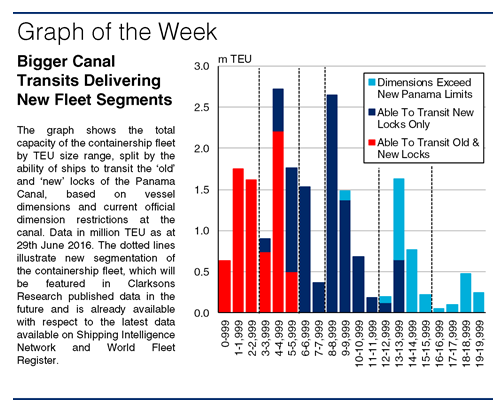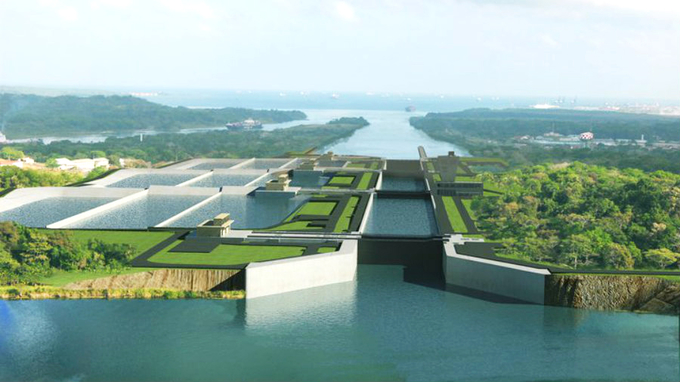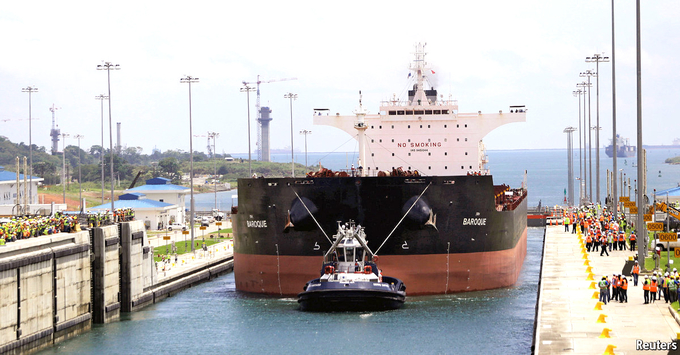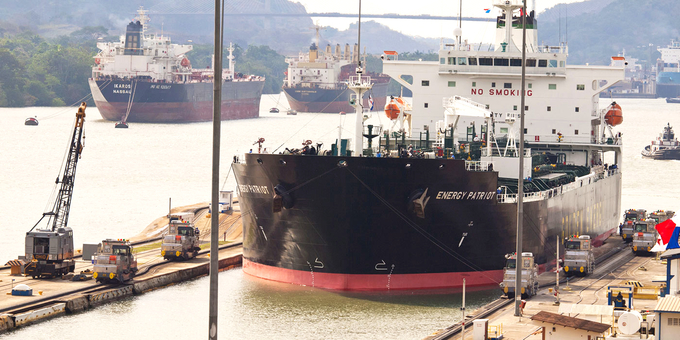
Last week’s Analysis examined the key impacts of the opening of the new locks at the Panama Canal across a range of shipping sectors. This week, with the new locks up and running for commercial business, the focus falls on the containership sector, with the capability to allow the transit of larger boxships one of the key aims of the canal expansion project.

At the ‘old’ locks, containerships accounted for a large share of the transits, and an even larger share of the overall toll revenue on the back of high value box cargo transits most notably from Asia to the US East Coast. Based on the official ‘New Panamax’ dimensions, the new locks will allow containerships of up to around 13,500 TEU (dependent on the precise design) to transit. Only 207 boxships in today’s fleet will be too large to pass through. The amount of TEU capacity able to pass through the canal will rise from 37% to 85% of the fleet.
Subsequently, a key impact on container shipping is the potential for upsizing of ships operating on the Asia-USEC trade. It looks likely that operators will upsize from ‘old Panamaxes’ initially to units around or above 8,000 TEU, with a number of carriers having already put new service plans in place. Even larger ships may eventually follow when port and infrastructure projects on the USEC are completed. Whether that is then followed by ‘cargo switching’ from Asia-USWC-‘landbridge’ to Asia-USEC ‘all water’ services on the basis of lower seaborne unit costs for now remains to be seen.

Another impact is on the structure of the containership sector. A new, more appropriate segmentation is needed. Along with the new vessel indicators and profiling described last week, Clarksons Research data will also provide fresh segmentation of the containership fleet from July onwards (see graph) to provide the most market-relevant statistics.
The sector now looks different with new segments clear. The 8-11,999 TEU sector will comprise the initial wave of ‘Neo-Panamaxes’. The 12-14,999 TEU sector contains the larger ‘Neo-Panamaxes’ of the future. Today 59 ships in the 12-14,999 TEU sector can transit the new locks on the basis of the official dimensions, another 39 have dimensions so close to the limits one would imagine they are likely to transit, and a further 50 will probably fit through on the basis of the already mooted expansion of the beam restriction to 51m.
There are a further 43 ships closely related in design terms to those detailed above, but above 15,000 TEU there is a clear step up to much longer and beamier designs. Deeper levels of segmentation will continue to track the decline in the ‘old Panamax’ sector.
So the opening of the new locks in Panama is big news for bigger boxships. Market watchers will have to keep a keen eye on the impact, and also get used to a new perspective on the market structure and data. But in a sector where there’s been so much upsizing in recent years anyway, perhaps that’s not such a new thing after all? Have a nice day.
(Source: Clarksons)

















